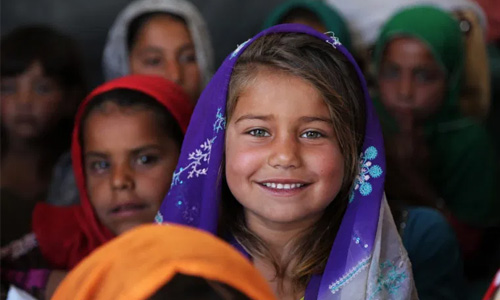Children are rightly regarded as the builders of a nation because they hold the key to the future. Secure, healthy and blissful children can open the door to a prosperous life. It is, therefore, prudent to take care of the children from all kinds of evils and offer them better living conditions. Within a state, it is the responsibility of a government to ensure that children are protected properly and their basic human rights are guaranteed. In Afghanistan, however, the current insecurity and the incapacity or negligence of the government itself has generated an environment wherein the rudimentary requirements of life for the children are not ensured. So, the children remain one of the most vulnerable strata of the society, with serious threats even to their existence.
The facts and figures in this regard are very worrying. On Tuesday (Dec. 08, 2020) Afghan Independent Human Rights Commission (AIHRC) revealed that over 630 children were killed and wounded in Afghanistan in the first six months of 2020 due to war and violence. Of that figure, 225 children were killed and 405 others were wounded. The Commission agrees that the actual figures may be much higher than the given ones as there are certain cases that go unreported. The Commission also emphasized that according to the international conventions on human rights, killing the people who are not involved in the conflict is a war crime.
Another report last month referred to by Save the Children said that more than 300 schools in Afghanistan were attacked between 2017 and 2019, injuring or killing at least 410 Afghan students and children. Thus, these killings of the innocent children are evident war crimes that go unnoticed, or they cannot make the authorities realize their responsibilities to the children of the country. It is, however, pertinent to mention that most of the killings are because of the insurgent attacks. Nevertheless, the civilian killings because of US-led airstrikes have also increased to a large extent. A recent report showed that during the tenure of the Trump administration, the such killings have increased to about 330%, which is really worrying for the people who already suffer insecurity and no protection by the government.
Save the Children report that was released before the Geneva Conference also revealed that between 2005 and 2019, at least 26,025 children were killed or maimed in Afghanistan, which implies that ‘an average of five children were killed or wounded every day in war-ravaged country over a period of 14 years’. Chris Nyamandi, the country director of Save Children Afghanistan commenting on the uncertain environment arising out of the phenomenon said, “Imagine living with the constant fear that today might be the day that your child is killed in a suicide attack or an airstrike. This is the grim reality for tens of thousands of Afghan parents whose children have been killed or injured.” Thus, the parents are very much concerned about the very survival of their children, which influences their confidence on the government and the security forces.
Last month, The International Committee of the Red Cross (ICRC) also highlighted in its report that Afghanistan was the deadliest country for civilians, with Afghan women and children making up half of the fatalities. This reality not only violates the right to life of the children, but also influences them in many other ways. Because of insecurity, the children are not able to have access to their other basic rights. Most unfortunately, children are not able to have access to school; therefore, they remain illiterate or are sent for child labor. The World Bank says almost half of Afghanistan’s 18,000 schools lack proper buildings, and the United Nations estimates that 3.7 million children, almost half of all primary school-aged children, are out of school in the country. Meanwhile, an estimated 60% of school-aged Afghan children missing out on their education are said to be girls. The situation is further complicated by the COVID-19 pandemic that has forced many of the schools to shut down. The discontinuation in education is bound to have influence on the school-going children, and it is difficult to assume that all of them will return to their schools after the situation normalizes, if it ever does.
Meanwhile, the rise in insecurity because of the stalled intra-Afghan talks in Qatar has also complicated the situation. Taliban, having not agreed to any ceasefire, have increased their attacks, which has caused the insecurity to further deteriorate. Certain insurgent groups, like Daesh, in these uncertain circumstances, are adding fuel to the fire in order to achieve their own objectives. Thus, the overall security situation for the civilians in general and the children in particular is set to challenge the security apparatus at the disposal of the authorities in Afghanistan.
The government authorities in such a dire situation needs to realize that children’s protection from insecurity and from all forms of abuse, providence of their basic requirements like education and the growth of their characters are the key factors for improvement if they are serious in tackling the situation. The children will ultimately create the future of the country; therefore, if they are provided security and better living conditions, they will be able to transfer the same to the future generations.
Home » Opinion » The Plight of Children in Afghanistan
The Plight of Children in Afghanistan
| Sajjad Aasim

